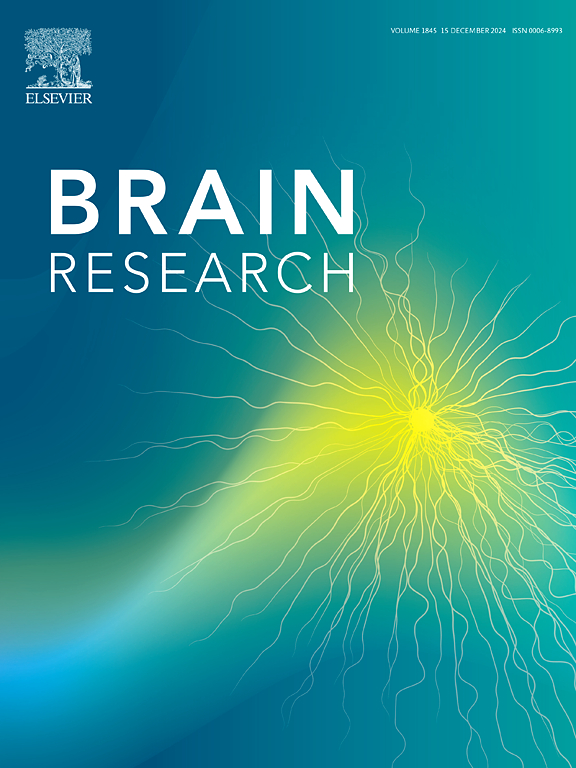持续急性输注angii后血压反应的性别差异:仅仅是性激素的原因吗?
IF 2.6
4区 医学
Q3 NEUROSCIENCES
引用次数: 0
摘要
我们的研究目的是分离性染色体补体(SCC),组织和激活激素对持续急性Ang-II输注期间两性二型血压调节和股动脉Agtr1b受体基因表达的影响。将“四种核心基因型”(SCC、组织和激活激素作用可以分离)的转基因小鼠进行性腺去角质,然后分为a)无激素替代(GDX) b) β-雌二醇(GDX + E2)和c)丙酸睾酮替代(GDX + TP)组。在麻醉小鼠持续输注Ang-II 10 min期间测定血压百分比变化,b)评估股动脉Agtr1b mRNA表达。平均动脉压(MAP)对Ang-II输注的响应分析揭示了SCC、组织和激活激素效应的相互作用。在GDX小鼠中,虽然XY-Male/GDX小鼠的MAP没有变化,但它导致XX-Male/GDX、XX-Female/GDX和XY-Female/GDX增加。在XX-Male/GDX + E2, XX-Female/GDX + E2, XY-Female/GDX + E2中,与GDX组相比,观察到活化抑制剂β-雌二醇的作用。GDX + TP处理的小鼠表现出与GDX组相反的特征;证明XY-Male/GDX + TP具有激活性睾酮加压作用。此外,还描述了激活激素对股动脉Agtr1b基因表达的影响;其中,与生物性别和SCC无关,TP组与GDX和GDX + E2组相比,显示出较低的Agtr1b表达。我们的数据可能有助于理解RAS、不同SCC背景、组织和激活性激素效应之间复杂的相互作用对血压调节的影响。本文章由计算机程序翻译,如有差异,请以英文原文为准。
Sex differences in blood pressure response to continuous acute Ang II infusion: are only sex hormones to blame?
The aim of our study was to dissociate sex chromosome complement (SCC), organizational and activational hormonal effects on sexually dimorphic blood pressure regulation during continuous acute Ang-II infusion and on femoral artery Agtr1b receptor gene expression. Transgenic mice of the “four core genotypes” (in which SCC, organizational and activational hormonal effects can be dissociated), were gonadectomized and then divided into (a) without hormone replacement (GDX) (b) with β-estradiol (GDX + E2), and (c) testosterone propionate replacement (GDX + TP) groups. In anesthetized mice percentage changes in blood pressure during continuous Ang-II infusion were assayed during 10 min and (b) femoral artery Agtr1b mRNA expression was evaluated.
The analysis of mean arterial pressure (MAP) in response to Ang-II infusion revealed an interaction of SCC, organizational and activational-hormonal effects. In GDX mice, while no changes in MAP were observed in XY-Male/GDX mice, it resulted in an increase in XX-Male/GDX, XX-Female/GDX and XY-Female/GDX.
In XX-Male/GDX + E2, XX-Female/GDX + E2, XY-Female/GDX + E2 an activational depressor β-estradiol effect was observed when compared to GDX groups. GDX + TP treated mice showed an opposite profile to that reported for GDX groups; demonstrating an activational testosterone pressor effect in XY-Male/GDX + TP. Furthermore, an activational hormonal effect on femoral artery Agtr1b gene expression was described; in which, irrespectively of biological sex and SCC, TP groups were demonstrated to show lower Agtr1b expression when compared to GDX and GDX + E2 groups.
Our data may contribute to the understanding of blood pressure regulation in the complex interplay between RAS, differential SCC backgrounds, the organizational and activational sex hormonal effects.
求助全文
通过发布文献求助,成功后即可免费获取论文全文。
去求助
来源期刊

Brain Research
医学-神经科学
CiteScore
5.90
自引率
3.40%
发文量
268
审稿时长
47 days
期刊介绍:
An international multidisciplinary journal devoted to fundamental research in the brain sciences.
Brain Research publishes papers reporting interdisciplinary investigations of nervous system structure and function that are of general interest to the international community of neuroscientists. As is evident from the journals name, its scope is broad, ranging from cellular and molecular studies through systems neuroscience, cognition and disease. Invited reviews are also published; suggestions for and inquiries about potential reviews are welcomed.
With the appearance of the final issue of the 2011 subscription, Vol. 67/1-2 (24 June 2011), Brain Research Reviews has ceased publication as a distinct journal separate from Brain Research. Review articles accepted for Brain Research are now published in that journal.
 求助内容:
求助内容: 应助结果提醒方式:
应助结果提醒方式:


